- The final results of the GENDER 101 project
The Gender 101 project allowed Partners in six different European countries to create a discussion channel with educators and parents on the topic of gender diversity
- Feedback from the experts in all project countries on the GENDER1 101 learning
The content of all Intellectual Outputs have been reviewed by experts in the respective Partner countries, including the content of the digital tool. Amongst the feedback received form the various European experts about the digital tool content is that digital tool includes clear, practical and factual information which has been researched. Experts also reflected on […]
- Next initiatives
The final months of the project will be allocated to Evaluation. The partners will be working on the review of the feedback received from activity participants and the persons delivering these activities, as well as work on the Impact Tool, Financial Reports and Dissemination Reports, ahead of the final delivery of the project’s results.
- GENDER 101 newsletter 5, 7/2024
Inside this issue: The final results of the GENDER 101 project; The last transnational project meeting in Malta; Cooperation with associated partners; Next initiatives; Final international conference in Malta
- Cooperation with associated partners
During the project’s timeframe, the Partners have been promoting the work on the project and discussing and sharing the outputs with various stakeholders, to ensure a wide dissemination and support the legacy of the project
- Final international conference in Malta
The final conference was held in Malta on the 14 May 2024.
The conference was attended by an around 100 participants, with people attending being a combination of parents and professionals working with parents and young people.
- Last transnational project meeting in Malta
The final in-person meeting was held in Malta on the 13th May 2024
- The programme of events in Malta, Lithuania, Poland, Ireland, Italy and Croatia
The Multiplier events took place in the five partner countries Lithuania, Poland, Ireland, Italy and Croatia in April 2024. The multiplier events were an opportunity to present the outcomes of the project and particularly launch the digital tools. The final conference event will be held in Malta, as the project coordinator, on the 14th May […]
- GENDER 101 newsletter 4, 4/2024
Inside this issue: The GENDER 101 digital tools; GENDER 101 learning for parents in all project countries;
Feedback from the experts in all project countries on the GENDER1 101 learning; The programme of events in Malta, Lithuania, Poland, Ireland, Italy and Croatia
- Supporting gender-diverse children in the classroom
Teachers who wish to support students from different gender origins in the classroom must establish an inclusive, polite, and supportive learning environment. Here are some strategies to consider: Learn about gender diversity, including vocabulary and helpful tips for working with children from different backgrounds. Stay up to date on the latest research and instructional strategies […]
- Signs your child may be questioning their gender identity
What to look out for to understand if my child is questioning their gender identity?What to pay attention to? What to look out for to understand if my child is questioning their gender identity?What to pay attention to? Paying close attention to detail is necessary to identify the signs and behaviors of your child’s gender […]
- Supporting the mental health of gender-diverse children
A number of vital considerations and activities need to be made in order to support a gender-diverse child’s mental health: Establishing a secure and supportive atmosphere is crucial. Create an environment at home where your child feels free to express their gender identity without fear of repercussions. This includes using their preferred name and pronouns […]
- Linking discrimination to culture and avoiding it
How is discrimination related to the culture we live in?How not to fall into the spectre of discrimination in certain situations? Discrimination is deeply rooted in society and can be based on many different characteristics. It manifests itself in everyday lives, in individual perceptions to culture and customs, in social and economic structures, in education […]
- How should I use pronouns?
A pronoun is a word that substitutes for a noun. A gender neutral or gender inclusive pronoun is a pronoun which does not associate a gender with the individual who is being discussed. Some languages, such as English, do not have a gender neutral or third gender pronoun available, and this has been criticized, since […]
- What is gender neutral language?
Gender-neutral language, also called non-sexist, gender-inclusive, or non-gender-specific language, refers to language that includes words or expressions that cannot be taken to refer to one gender only.This kind of language avoids bias against a particular sex or gender. It has to be highlighted that in English, there is a difference between “grammatical gender”, “gender as […]
- Is gender identity contagious?
Well-organised in its approach, rectifying this prevalent misunderstanding commences with a fundamental elucidation of the definition of “contagious” and progresses towards analysing stereotypes. This approach successfully debunks the fallacy while imparting knowledge regarding gender identity and diversity. Incorporating details about the significance of empathy, comprehension, and the distinction between influence and contagion might furnish further […]
- Discussing these issues with the other children
This segment establishes a robust groundwork for acquainting young individuals with LGBTQ+ and underscores the significance of diversity and inclusiveness. To improve this segment, contemplate incorporating recommendations regarding activities and language that are suitable for the target age group and which can foster comprehension. Additionally, it may be beneficial to offer guidance on responding to […]
- Educating other students on gender diversity
The explained material is thorough and all-encompassing, employing language that should be comprehensible to a broad spectrum of individuals. It effectively dispels fallacies and rectifies prevalent misunderstandings concerning gender diversity. To enhance this segment, it could be advantageous to incorporate additional concrete illustrations or analogies that are readily relatable to children. This would serve to […]
- Approaching a child for support on gender issues
It is necessary to support the gender identity and behaviour of your child even if they are gender-diverse or transgender children. Parents by accepting and showing to love and accept them as they are (regardless of whether it is just a phase), can help them feel more satisfied, happy and ready to face an environment […]
- How do I handle name and gender changes at school
In order for children to cope with gender change in school, it is important to educate and sensitize teachers and children in order to accept students as they are, regardless of gender diversity or sexuality. It is also important to create an atmosphere within the school in which children can openly think and talk about […]
- Is it a phase?
The fact is that the topic of gender diversity has been talked about more openly in the last few years, and it is certain that it has existed much longer. For some children it is certainly a gender orientation different from sex, while for some children it is still a phase. Adolescence brings developmental challenges […]
- Handling a co-parent’s struggle with a gender-diverse child
Facing a situation where one parent struggles to accept their child’s gender nonconformity can be a complex and emotionally charged experience. Here are some strategies that can help navigate these situations: Open and Empathetic Communication: Active listening and validation: Create a safe space for both parents to express their concerns, fears, and questions without judgment. […]
- How can you support this exploration
Embrace curiosity: Think of yourself as a gardener, fostering a safe space for your child’s curiosity to bloom. Encourage them to ask questions, explore different interests, and express themselves authentically without judgment.Plant the seeds of understanding: Just as sunlight nourishes a flower, provide age-appropriate resources like books, documentaries, or conversations about gender diversity. This helps […]
- Can a child’s gender identity change over time
Absolutely, a child’s understanding of their gender identity can evolve over time. This is due to the dynamic nature of self-discovery, which is influenced by a complex interplay of factors, including: It’s important to understand that not all children will experience changes in their gender identity. Many children will have a consistent understanding of their […]
- When do children recognize their gender identity
The recognition of one’s gender identity is a multifaceted and dynamic process that unfolds across various developmental stages. While research suggests that children as young as 2 years old may begin expressing preferences and inclinations associated with a particular gender (American Academy of Pediatrics, 2019), it’s crucial to remember that this is just the initial […]
- Difference between gender and sexual orientation
Gender identity and sexual orientation are different personality characteristics. Gender identity is personal (how you see yourself), it is about how you define yourself in relation to your own gender. While sexual orientation is interpersonal (who you physically, emotionally and/or romantically attracted to). Traditional societal norms often dictate strict rules for how people “should” act, […]
- Is it a trend?
Gender diversity is not just a trend, it is not a caprice, it is not a disease, it is not a perversion, and children are not threatened by transgender people. Children learning about transgenderism does not impact their gender identity. Such knowledge does not make cisgender children “become” transgender, any more than learning about different […]
- What is gender identity?
For many gender diverse people, the concept of binary gender – having to choose to express yourself as male or female – is constraining. Some people would prefer to have the freedom to change from one gender to another, or not have a gender identity at all. Others just want to be able to openly […]
- The GENDER 101 digital tools
The Digital Tools are breakthrough tools that help educational environments handle and understand gender diversity and identity
- And What about Us?
“And What about Us? Parents & Educators of Gender Diverse Children” conference aims to deepen the understanding of gender diversity among children
- Events in Malta, Lithuania, Poland, Ireland, Italy and Croatia
The project team is organizing events in all project countries
- SAVE THE DATE: Diversità di genere?
Diversità di genere? (per formatori e genitori) – 19 aprile 2024, Napoli (Italia) – 17:00-19:00
- Using the Guide for Trainers
The “Guidebook for Trainers: Introduction to Gender Diversity” is an excellent resource for trainers who want to address gender identity, expression, and related challenges effectively
- GENDER 101 newsletter 3, 3/2024
Inside this issue: GENDER 101 programme for trainers; Feedback on the GENDER1 101 learning from trainers and parents; Online Interim Meeting and Transnational Project Meeting in Ireland; Using the Guide for Trainers
- Online Interim Meeting and Transnational Project Meeting in Ireland
The project partners are closely cooperating to the project implementation,meeting online and in person, to share the timely progression of the next steps of GENDER 101
- GENDER 101 learning for parents in all project countries
The Master classes have taken place during summer 2023 with parents in the six partner countries. Whilst some partners have encountered difficulties in recruiting parents to attend, once the sessions were held parents felt comfortable and safe and realized they were attending a session in an open environment where they could learn, talk and ask. […]
- Feedback on the GENDER 101 learning from trainers and parents
The different activities carried on with 18 trainers and 360 parents in the project countries gave to the project team the opportunity to collect comprehensive feedbacks on the project training
- Training in Gender diversity
Amongst the results of the Gender 101 project is the creation of a space for Training in Gender diversity
- GENDER 101 newsletter 2, 7/2023
Inside this issue: The words for gender; Transnational project meeting in Poland; The GENDER 101 learning programme for trainers and parents; GENDER 101 train the trainers in the project countries; GENDER 101 Guide for trainers
- The GENDER 101 learning programme for trainers and parents
GENDER 101 dedicated learning delivered to 360 parents in the project countries
- GENDER 101 Guide for trainers
GENDER 101 supporting materials for trainers and stakeholders created by the project team
- GENDER 101 train the trainers in the project countries
GENDER 101 masterclasses for trainers in all project countries
- Transnational project meeting in Poland
On 23-24 May 2023 the project team met in person in Łódź (Poland)
- GENDER 101 newsletter 1, 2/2023
Inside this issue: Gender?; The project GENDER 101; The mission of GENDER 101; Gender and language; Focus groups with educators and parents in the project countries; GENDER 101 branding; GENDER 101 Kick-off meeting in Lithuania
- The words for gender
In the course of the consultation activities conducted in in Malta, Lithuania, Poland, Ireland, Italy and Croatia, the project GENDER 101 identified key words describing gender and obstacles to gender inclusiveness
- Focus groups with educators and parents in the project countries
The project team consulted educators and parents in Malta, Lithuania, Poland, Ireland, Italy and Croatia on gender and obstacles to gender inclusiveness
- Gender and language
Language and gender are interconnected as language can reflect and reinforce societal gender norms and expectations
- Gendered language in Malta
There has been some recent effort to promote gender-inclusive language in Malta that is is still an ongoing process
- Gendered language in Croatia
In Croatia, there is no specific standard or guide set to be used as a gendered language
- Gendered language in Ireland
The use of gendered language in Irish can be a contentious issue, particularly with regards to the inclusion of non-binary and gender non-conforming individuals
- Gendered language in Poland
Polish language is in general binary, with nouns with own gender and verbs having incorporated gender in their forms
- Gendered language in Lithuania
Gender identity is still not legally recognised in Lithuania. Therefore, the Lithuanian language does not have separate words for the different aspects of gender
- Gendered language in Italy
In the Italian language, a research for suitable expressions to represent people who do not recognize themselves in the gender binary is underway, to the scope of promoting a language that will be more respectful of diversity and inclusive of all genders
- Gender?
“Gender refers to the characteristics of women, men, girls and boys that are socially constructed.” World Health Organisation, 2023
- The project team met in Lithuania
On 24th and 25th January 2023 the GENDER 101 project team met in person in Šiauliai (Lithuania)
- GENDER 101 branding
The GENDER 101 project designed its branding strategy, based on logo and visual identity
- First steps of the project
Online kick off meeting of the project partners to initiate the GENDER 101 activities
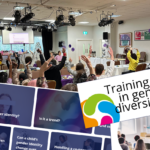 The Gender 101 project allowed Partners in six different European countries to create a discussion channel with educators and parents on the topic of gender diversity
The Gender 101 project allowed Partners in six different European countries to create a discussion channel with educators and parents on the topic of gender diversity The content of all Intellectual Outputs have been reviewed by experts in the respective Partner countries, including the content of the digital tool. Amongst the feedback received form the various European experts about the digital tool content is that digital tool includes clear, practical and factual information which has been researched. Experts also reflected on […]
The content of all Intellectual Outputs have been reviewed by experts in the respective Partner countries, including the content of the digital tool. Amongst the feedback received form the various European experts about the digital tool content is that digital tool includes clear, practical and factual information which has been researched. Experts also reflected on […] The final months of the project will be allocated to Evaluation. The partners will be working on the review of the feedback received from activity participants and the persons delivering these activities, as well as work on the Impact Tool, Financial Reports and Dissemination Reports, ahead of the final delivery of the project’s results.
The final months of the project will be allocated to Evaluation. The partners will be working on the review of the feedback received from activity participants and the persons delivering these activities, as well as work on the Impact Tool, Financial Reports and Dissemination Reports, ahead of the final delivery of the project’s results. Inside this issue: The final results of the GENDER 101 project; The last transnational project meeting in Malta; Cooperation with associated partners; Next initiatives; Final international conference in Malta
Inside this issue: The final results of the GENDER 101 project; The last transnational project meeting in Malta; Cooperation with associated partners; Next initiatives; Final international conference in Malta During the project’s timeframe, the Partners have been promoting the work on the project and discussing and sharing the outputs with various stakeholders, to ensure a wide dissemination and support the legacy of the project
During the project’s timeframe, the Partners have been promoting the work on the project and discussing and sharing the outputs with various stakeholders, to ensure a wide dissemination and support the legacy of the project The final conference was held in Malta on the 14 May 2024. The conference was attended by an around 100 participants, with people attending being a combination of parents and professionals working with parents and young people.
The final conference was held in Malta on the 14 May 2024. The conference was attended by an around 100 participants, with people attending being a combination of parents and professionals working with parents and young people. The final in-person meeting was held in Malta on the 13th May 2024
The final in-person meeting was held in Malta on the 13th May 2024 The Multiplier events took place in the five partner countries Lithuania, Poland, Ireland, Italy and Croatia in April 2024. The multiplier events were an opportunity to present the outcomes of the project and particularly launch the digital tools. The final conference event will be held in Malta, as the project coordinator, on the 14th May […]
The Multiplier events took place in the five partner countries Lithuania, Poland, Ireland, Italy and Croatia in April 2024. The multiplier events were an opportunity to present the outcomes of the project and particularly launch the digital tools. The final conference event will be held in Malta, as the project coordinator, on the 14th May […]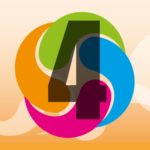 Inside this issue: The GENDER 101 digital tools; GENDER 101 learning for parents in all project countries; Feedback from the experts in all project countries on the GENDER1 101 learning; The programme of events in Malta, Lithuania, Poland, Ireland, Italy and Croatia
Inside this issue: The GENDER 101 digital tools; GENDER 101 learning for parents in all project countries; Feedback from the experts in all project countries on the GENDER1 101 learning; The programme of events in Malta, Lithuania, Poland, Ireland, Italy and Croatia Teachers who wish to support students from different gender origins in the classroom must establish an inclusive, polite, and supportive learning environment. Here are some strategies to consider: Learn about gender diversity, including vocabulary and helpful tips for working with children from different backgrounds. Stay up to date on the latest research and instructional strategies […]
Teachers who wish to support students from different gender origins in the classroom must establish an inclusive, polite, and supportive learning environment. Here are some strategies to consider: Learn about gender diversity, including vocabulary and helpful tips for working with children from different backgrounds. Stay up to date on the latest research and instructional strategies […] What to look out for to understand if my child is questioning their gender identity?What to pay attention to? What to look out for to understand if my child is questioning their gender identity?What to pay attention to? Paying close attention to detail is necessary to identify the signs and behaviors of your child’s gender […]
What to look out for to understand if my child is questioning their gender identity?What to pay attention to? What to look out for to understand if my child is questioning their gender identity?What to pay attention to? Paying close attention to detail is necessary to identify the signs and behaviors of your child’s gender […] A number of vital considerations and activities need to be made in order to support a gender-diverse child’s mental health: Establishing a secure and supportive atmosphere is crucial. Create an environment at home where your child feels free to express their gender identity without fear of repercussions. This includes using their preferred name and pronouns […]
A number of vital considerations and activities need to be made in order to support a gender-diverse child’s mental health: Establishing a secure and supportive atmosphere is crucial. Create an environment at home where your child feels free to express their gender identity without fear of repercussions. This includes using their preferred name and pronouns […] How is discrimination related to the culture we live in?How not to fall into the spectre of discrimination in certain situations? Discrimination is deeply rooted in society and can be based on many different characteristics. It manifests itself in everyday lives, in individual perceptions to culture and customs, in social and economic structures, in education […]
How is discrimination related to the culture we live in?How not to fall into the spectre of discrimination in certain situations? Discrimination is deeply rooted in society and can be based on many different characteristics. It manifests itself in everyday lives, in individual perceptions to culture and customs, in social and economic structures, in education […]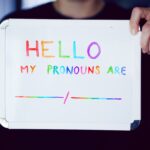 A pronoun is a word that substitutes for a noun. A gender neutral or gender inclusive pronoun is a pronoun which does not associate a gender with the individual who is being discussed. Some languages, such as English, do not have a gender neutral or third gender pronoun available, and this has been criticized, since […]
A pronoun is a word that substitutes for a noun. A gender neutral or gender inclusive pronoun is a pronoun which does not associate a gender with the individual who is being discussed. Some languages, such as English, do not have a gender neutral or third gender pronoun available, and this has been criticized, since […] Gender-neutral language, also called non-sexist, gender-inclusive, or non-gender-specific language, refers to language that includes words or expressions that cannot be taken to refer to one gender only.This kind of language avoids bias against a particular sex or gender. It has to be highlighted that in English, there is a difference between “grammatical gender”, “gender as […]
Gender-neutral language, also called non-sexist, gender-inclusive, or non-gender-specific language, refers to language that includes words or expressions that cannot be taken to refer to one gender only.This kind of language avoids bias against a particular sex or gender. It has to be highlighted that in English, there is a difference between “grammatical gender”, “gender as […] Well-organised in its approach, rectifying this prevalent misunderstanding commences with a fundamental elucidation of the definition of “contagious” and progresses towards analysing stereotypes. This approach successfully debunks the fallacy while imparting knowledge regarding gender identity and diversity. Incorporating details about the significance of empathy, comprehension, and the distinction between influence and contagion might furnish further […]
Well-organised in its approach, rectifying this prevalent misunderstanding commences with a fundamental elucidation of the definition of “contagious” and progresses towards analysing stereotypes. This approach successfully debunks the fallacy while imparting knowledge regarding gender identity and diversity. Incorporating details about the significance of empathy, comprehension, and the distinction between influence and contagion might furnish further […] This segment establishes a robust groundwork for acquainting young individuals with LGBTQ+ and underscores the significance of diversity and inclusiveness. To improve this segment, contemplate incorporating recommendations regarding activities and language that are suitable for the target age group and which can foster comprehension. Additionally, it may be beneficial to offer guidance on responding to […]
This segment establishes a robust groundwork for acquainting young individuals with LGBTQ+ and underscores the significance of diversity and inclusiveness. To improve this segment, contemplate incorporating recommendations regarding activities and language that are suitable for the target age group and which can foster comprehension. Additionally, it may be beneficial to offer guidance on responding to […] The explained material is thorough and all-encompassing, employing language that should be comprehensible to a broad spectrum of individuals. It effectively dispels fallacies and rectifies prevalent misunderstandings concerning gender diversity. To enhance this segment, it could be advantageous to incorporate additional concrete illustrations or analogies that are readily relatable to children. This would serve to […]
The explained material is thorough and all-encompassing, employing language that should be comprehensible to a broad spectrum of individuals. It effectively dispels fallacies and rectifies prevalent misunderstandings concerning gender diversity. To enhance this segment, it could be advantageous to incorporate additional concrete illustrations or analogies that are readily relatable to children. This would serve to […] It is necessary to support the gender identity and behaviour of your child even if they are gender-diverse or transgender children. Parents by accepting and showing to love and accept them as they are (regardless of whether it is just a phase), can help them feel more satisfied, happy and ready to face an environment […]
It is necessary to support the gender identity and behaviour of your child even if they are gender-diverse or transgender children. Parents by accepting and showing to love and accept them as they are (regardless of whether it is just a phase), can help them feel more satisfied, happy and ready to face an environment […] In order for children to cope with gender change in school, it is important to educate and sensitize teachers and children in order to accept students as they are, regardless of gender diversity or sexuality. It is also important to create an atmosphere within the school in which children can openly think and talk about […]
In order for children to cope with gender change in school, it is important to educate and sensitize teachers and children in order to accept students as they are, regardless of gender diversity or sexuality. It is also important to create an atmosphere within the school in which children can openly think and talk about […] The fact is that the topic of gender diversity has been talked about more openly in the last few years, and it is certain that it has existed much longer. For some children it is certainly a gender orientation different from sex, while for some children it is still a phase. Adolescence brings developmental challenges […]
The fact is that the topic of gender diversity has been talked about more openly in the last few years, and it is certain that it has existed much longer. For some children it is certainly a gender orientation different from sex, while for some children it is still a phase. Adolescence brings developmental challenges […] Facing a situation where one parent struggles to accept their child’s gender nonconformity can be a complex and emotionally charged experience. Here are some strategies that can help navigate these situations: Open and Empathetic Communication: Active listening and validation: Create a safe space for both parents to express their concerns, fears, and questions without judgment. […]
Facing a situation where one parent struggles to accept their child’s gender nonconformity can be a complex and emotionally charged experience. Here are some strategies that can help navigate these situations: Open and Empathetic Communication: Active listening and validation: Create a safe space for both parents to express their concerns, fears, and questions without judgment. […] Embrace curiosity: Think of yourself as a gardener, fostering a safe space for your child’s curiosity to bloom. Encourage them to ask questions, explore different interests, and express themselves authentically without judgment.Plant the seeds of understanding: Just as sunlight nourishes a flower, provide age-appropriate resources like books, documentaries, or conversations about gender diversity. This helps […]
Embrace curiosity: Think of yourself as a gardener, fostering a safe space for your child’s curiosity to bloom. Encourage them to ask questions, explore different interests, and express themselves authentically without judgment.Plant the seeds of understanding: Just as sunlight nourishes a flower, provide age-appropriate resources like books, documentaries, or conversations about gender diversity. This helps […] Absolutely, a child’s understanding of their gender identity can evolve over time. This is due to the dynamic nature of self-discovery, which is influenced by a complex interplay of factors, including: It’s important to understand that not all children will experience changes in their gender identity. Many children will have a consistent understanding of their […]
Absolutely, a child’s understanding of their gender identity can evolve over time. This is due to the dynamic nature of self-discovery, which is influenced by a complex interplay of factors, including: It’s important to understand that not all children will experience changes in their gender identity. Many children will have a consistent understanding of their […] The recognition of one’s gender identity is a multifaceted and dynamic process that unfolds across various developmental stages. While research suggests that children as young as 2 years old may begin expressing preferences and inclinations associated with a particular gender (American Academy of Pediatrics, 2019), it’s crucial to remember that this is just the initial […]
The recognition of one’s gender identity is a multifaceted and dynamic process that unfolds across various developmental stages. While research suggests that children as young as 2 years old may begin expressing preferences and inclinations associated with a particular gender (American Academy of Pediatrics, 2019), it’s crucial to remember that this is just the initial […]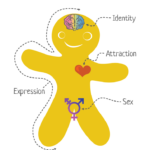 Gender identity and sexual orientation are different personality characteristics. Gender identity is personal (how you see yourself), it is about how you define yourself in relation to your own gender. While sexual orientation is interpersonal (who you physically, emotionally and/or romantically attracted to). Traditional societal norms often dictate strict rules for how people “should” act, […]
Gender identity and sexual orientation are different personality characteristics. Gender identity is personal (how you see yourself), it is about how you define yourself in relation to your own gender. While sexual orientation is interpersonal (who you physically, emotionally and/or romantically attracted to). Traditional societal norms often dictate strict rules for how people “should” act, […] Gender diversity is not just a trend, it is not a caprice, it is not a disease, it is not a perversion, and children are not threatened by transgender people. Children learning about transgenderism does not impact their gender identity. Such knowledge does not make cisgender children “become” transgender, any more than learning about different […]
Gender diversity is not just a trend, it is not a caprice, it is not a disease, it is not a perversion, and children are not threatened by transgender people. Children learning about transgenderism does not impact their gender identity. Such knowledge does not make cisgender children “become” transgender, any more than learning about different […] For many gender diverse people, the concept of binary gender – having to choose to express yourself as male or female – is constraining. Some people would prefer to have the freedom to change from one gender to another, or not have a gender identity at all. Others just want to be able to openly […]
For many gender diverse people, the concept of binary gender – having to choose to express yourself as male or female – is constraining. Some people would prefer to have the freedom to change from one gender to another, or not have a gender identity at all. Others just want to be able to openly […]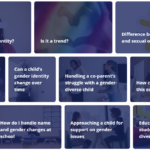 The Digital Tools are breakthrough tools that help educational environments handle and understand gender diversity and identity
The Digital Tools are breakthrough tools that help educational environments handle and understand gender diversity and identity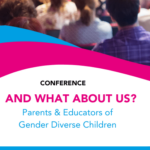 “And What about Us? Parents & Educators of Gender Diverse Children” conference aims to deepen the understanding of gender diversity among children
“And What about Us? Parents & Educators of Gender Diverse Children” conference aims to deepen the understanding of gender diversity among children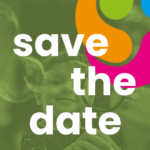 The project team is organizing events in all project countries
The project team is organizing events in all project countries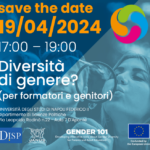 Diversità di genere? (per formatori e genitori) – 19 aprile 2024, Napoli (Italia) – 17:00-19:00
Diversità di genere? (per formatori e genitori) – 19 aprile 2024, Napoli (Italia) – 17:00-19:00 The “Guidebook for Trainers: Introduction to Gender Diversity” is an excellent resource for trainers who want to address gender identity, expression, and related challenges effectively
The “Guidebook for Trainers: Introduction to Gender Diversity” is an excellent resource for trainers who want to address gender identity, expression, and related challenges effectively Inside this issue: GENDER 101 programme for trainers; Feedback on the GENDER1 101 learning from trainers and parents; Online Interim Meeting and Transnational Project Meeting in Ireland; Using the Guide for Trainers
Inside this issue: GENDER 101 programme for trainers; Feedback on the GENDER1 101 learning from trainers and parents; Online Interim Meeting and Transnational Project Meeting in Ireland; Using the Guide for Trainers The project partners are closely cooperating to the project implementation,meeting online and in person, to share the timely progression of the next steps of GENDER 101
The project partners are closely cooperating to the project implementation,meeting online and in person, to share the timely progression of the next steps of GENDER 101 The Master classes have taken place during summer 2023 with parents in the six partner countries. Whilst some partners have encountered difficulties in recruiting parents to attend, once the sessions were held parents felt comfortable and safe and realized they were attending a session in an open environment where they could learn, talk and ask. […]
The Master classes have taken place during summer 2023 with parents in the six partner countries. Whilst some partners have encountered difficulties in recruiting parents to attend, once the sessions were held parents felt comfortable and safe and realized they were attending a session in an open environment where they could learn, talk and ask. […]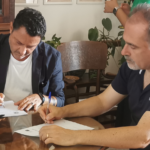 The different activities carried on with 18 trainers and 360 parents in the project countries gave to the project team the opportunity to collect comprehensive feedbacks on the project training
The different activities carried on with 18 trainers and 360 parents in the project countries gave to the project team the opportunity to collect comprehensive feedbacks on the project training Amongst the results of the Gender 101 project is the creation of a space for Training in Gender diversity
Amongst the results of the Gender 101 project is the creation of a space for Training in Gender diversity Inside this issue: The words for gender; Transnational project meeting in Poland; The GENDER 101 learning programme for trainers and parents; GENDER 101 train the trainers in the project countries; GENDER 101 Guide for trainers
Inside this issue: The words for gender; Transnational project meeting in Poland; The GENDER 101 learning programme for trainers and parents; GENDER 101 train the trainers in the project countries; GENDER 101 Guide for trainers GENDER 101 dedicated learning delivered to 360 parents in the project countries
GENDER 101 dedicated learning delivered to 360 parents in the project countries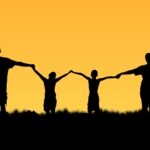 GENDER 101 supporting materials for trainers and stakeholders created by the project team
GENDER 101 supporting materials for trainers and stakeholders created by the project team GENDER 101 masterclasses for trainers in all project countries
GENDER 101 masterclasses for trainers in all project countries On 23-24 May 2023 the project team met in person in Łódź (Poland)
On 23-24 May 2023 the project team met in person in Łódź (Poland) Inside this issue: Gender?; The project GENDER 101; The mission of GENDER 101; Gender and language; Focus groups with educators and parents in the project countries; GENDER 101 branding; GENDER 101 Kick-off meeting in Lithuania
Inside this issue: Gender?; The project GENDER 101; The mission of GENDER 101; Gender and language; Focus groups with educators and parents in the project countries; GENDER 101 branding; GENDER 101 Kick-off meeting in Lithuania In the course of the consultation activities conducted in in Malta, Lithuania, Poland, Ireland, Italy and Croatia, the project GENDER 101 identified key words describing gender and obstacles to gender inclusiveness
In the course of the consultation activities conducted in in Malta, Lithuania, Poland, Ireland, Italy and Croatia, the project GENDER 101 identified key words describing gender and obstacles to gender inclusiveness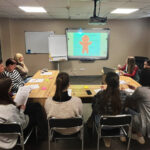 The project team consulted educators and parents in Malta, Lithuania, Poland, Ireland, Italy and Croatia on gender and obstacles to gender inclusiveness
The project team consulted educators and parents in Malta, Lithuania, Poland, Ireland, Italy and Croatia on gender and obstacles to gender inclusiveness Language and gender are interconnected as language can reflect and reinforce societal gender norms and expectations
Language and gender are interconnected as language can reflect and reinforce societal gender norms and expectations There has been some recent effort to promote gender-inclusive language in Malta that is is still an ongoing process
There has been some recent effort to promote gender-inclusive language in Malta that is is still an ongoing process In Croatia, there is no specific standard or guide set to be used as a gendered language
In Croatia, there is no specific standard or guide set to be used as a gendered language The use of gendered language in Irish can be a contentious issue, particularly with regards to the inclusion of non-binary and gender non-conforming individuals
The use of gendered language in Irish can be a contentious issue, particularly with regards to the inclusion of non-binary and gender non-conforming individuals Polish language is in general binary, with nouns with own gender and verbs having incorporated gender in their forms
Polish language is in general binary, with nouns with own gender and verbs having incorporated gender in their forms Gender identity is still not legally recognised in Lithuania. Therefore, the Lithuanian language does not have separate words for the different aspects of gender
Gender identity is still not legally recognised in Lithuania. Therefore, the Lithuanian language does not have separate words for the different aspects of gender In the Italian language, a research for suitable expressions to represent people who do not recognize themselves in the gender binary is underway, to the scope of promoting a language that will be more respectful of diversity and inclusive of all genders
In the Italian language, a research for suitable expressions to represent people who do not recognize themselves in the gender binary is underway, to the scope of promoting a language that will be more respectful of diversity and inclusive of all genders “Gender refers to the characteristics of women, men, girls and boys that are socially constructed.” World Health Organisation, 2023
“Gender refers to the characteristics of women, men, girls and boys that are socially constructed.” World Health Organisation, 2023 On 24th and 25th January 2023 the GENDER 101 project team met in person in Šiauliai (Lithuania)
On 24th and 25th January 2023 the GENDER 101 project team met in person in Šiauliai (Lithuania)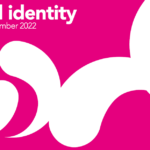 The GENDER 101 project designed its branding strategy, based on logo and visual identity
The GENDER 101 project designed its branding strategy, based on logo and visual identity Online kick off meeting of the project partners to initiate the GENDER 101 activities
Online kick off meeting of the project partners to initiate the GENDER 101 activities